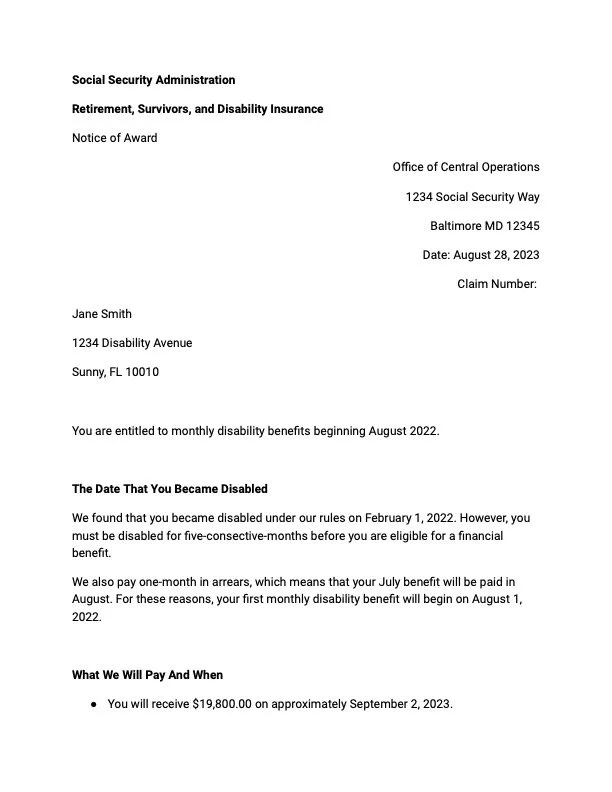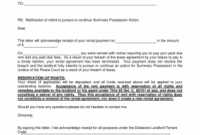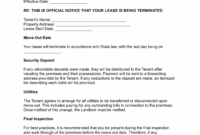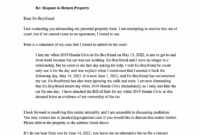Navigating the Social Security Disability application process can feel overwhelming, like trying to solve a complex puzzle with missing pieces. You’re dealing with health challenges, and the last thing you need is added stress from paperwork and bureaucratic hurdles. However, clear communication is absolutely critical, and often, this comes in the form of various letters supporting your claim.
Whether it’s a note from your doctor, a statement from a friend or family member, or even your own personal account, these written documents play a vital role in painting a complete picture of your condition for the Social Security Administration. Having a reliable social security disability letter template can truly simplify this demanding process, ensuring you cover all the necessary points without missing crucial details.
Understanding the Different Letters You Might Need
When you apply for Social Security Disability benefits, you’re not just submitting a single form; you’re building a comprehensive case that demonstrates your inability to work due to a medical condition. This case relies heavily on written evidence, and that often means providing several types of letters. Each letter serves a unique purpose, contributing to the overall strength and clarity of your application. Think of each letter as a piece of your story, told from a different perspective, all coming together to support your claim.
The most critical letters often come from your medical providers. These are not just simple doctor’s notes; they are detailed accounts of your diagnosis, treatment, prognosis, and, most importantly, how your condition functionally limits your ability to perform work-related activities. The Social Security Administration places significant weight on objective medical evidence, so a well-crafted letter from your treating physician can be incredibly influential in their decision-making process. It needs to be thorough, specific, and clearly connect your medical issues to your work limitations.
Beyond medical statements, you might also need to provide personal statements or statements from third parties who know you well. Your own personal statement is an opportunity to explain, in your own words, how your disability affects your daily life and your capacity to work. This humanizes your application and gives the decision-makers insight into your struggles beyond clinical diagnoses. Similarly, statements from friends, family, or former employers can corroborate your claims, describing observations of your limitations and how your condition has changed your life.

These various letters work together to create a robust and persuasive narrative for the Social Security Administration. Each piece of correspondence should be consistent with the others, painting a clear and undeniable picture of your disabling condition. Without these detailed, supportive documents, your application may lack the crucial information needed for a favorable decision.
Key Information for Doctor’s Letters
- Specific diagnosis and date of onset.
- Description of symptoms and their severity.
- Treatment history, including medications, therapies, and surgeries.
- Prognosis and expected duration of impairment.
- Detailed functional limitations (e.g., inability to sit/stand for long periods, lift certain weights, concentrate).
- Any side effects from medication affecting work performance.
Crafting Your Social Security Disability Letter Template: Essential Tips
When you’re preparing any letter to support your disability claim, whether it’s from a doctor, a friend, or yourself, clarity and precision are your best allies. The individuals reviewing your application are sifting through countless documents, so making your information easy to understand and to the point is crucial. Avoid overly technical jargon where possible, or ensure that any medical terms are clearly explained. The goal is to leave no room for misinterpretation regarding your condition and its impact on your life.
Every letter should be professional in tone and presented neatly. While you might be tempted to pour out every frustration, maintaining a respectful and factual approach is always best. This doesn’t mean you shouldn’t convey the severity of your situation, but rather that you should do so through clear, evidence-based descriptions rather than emotional pleas. Think of each letter as a piece of an official record, contributing to a legal and medical assessment of your eligibility.
A critical aspect of any effective social security disability letter template is the inclusion of specific dates and details. Vague statements like “I’ve been sick for a while” are far less impactful than “My symptoms, including chronic fatigue and severe joint pain, began around January 2020 and have progressively worsened.” Always refer to specific medical records, diagnoses, and treatment dates when applicable. This specificity lends credibility and allows the reviewers to easily cross-reference information within your file.
Finally, always double-check and proofread every letter before submission. Typos, grammatical errors, or missing information can detract from the professionalism of your application and potentially confuse the reviewer. If possible, have someone else read through your letters for clarity and accuracy. A fresh pair of eyes can often catch mistakes or areas that might be unclear, ensuring that your message is conveyed as effectively as possible.
Successfully navigating the Social Security Disability application journey requires meticulous attention to detail and persistent communication. The various letters you submit are not mere formalities; they are foundational pillars of your claim, providing the necessary context and evidence for a favorable decision. Taking the time to craft each one thoughtfully and thoroughly can significantly impact the outcome, helping you secure the support you need.
By understanding the purpose of each document and leveraging structured templates, you empower yourself to present the strongest possible case. These efforts, combined with comprehensive medical records, pave the way toward a more hopeful and secure future during a challenging time.



